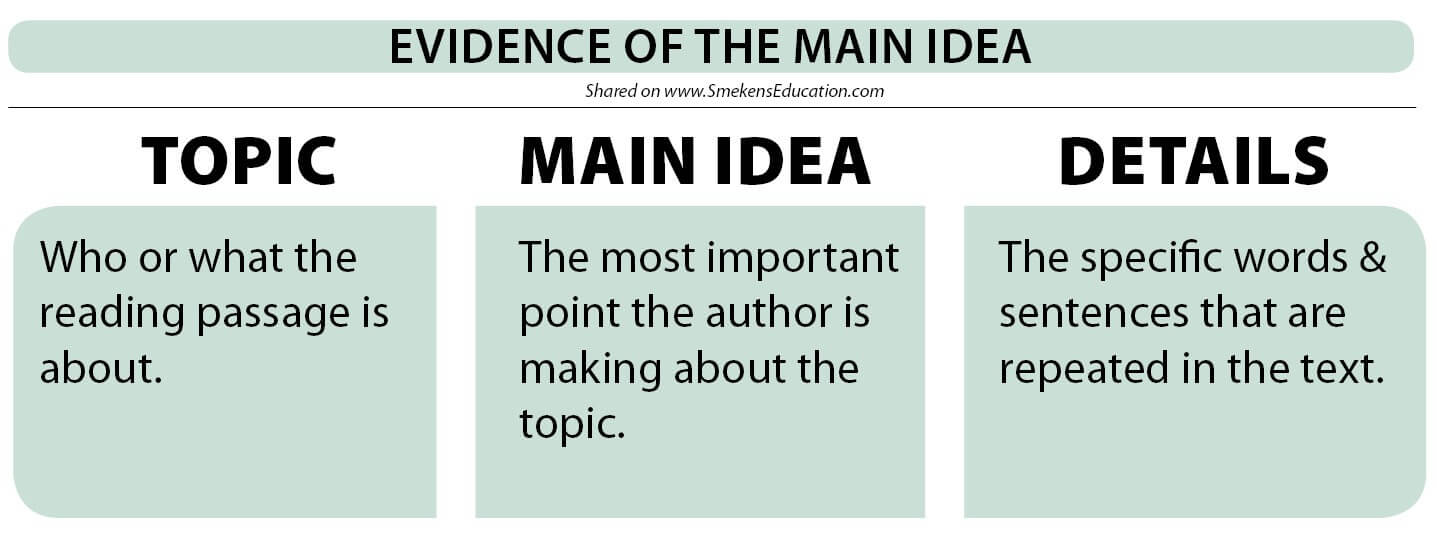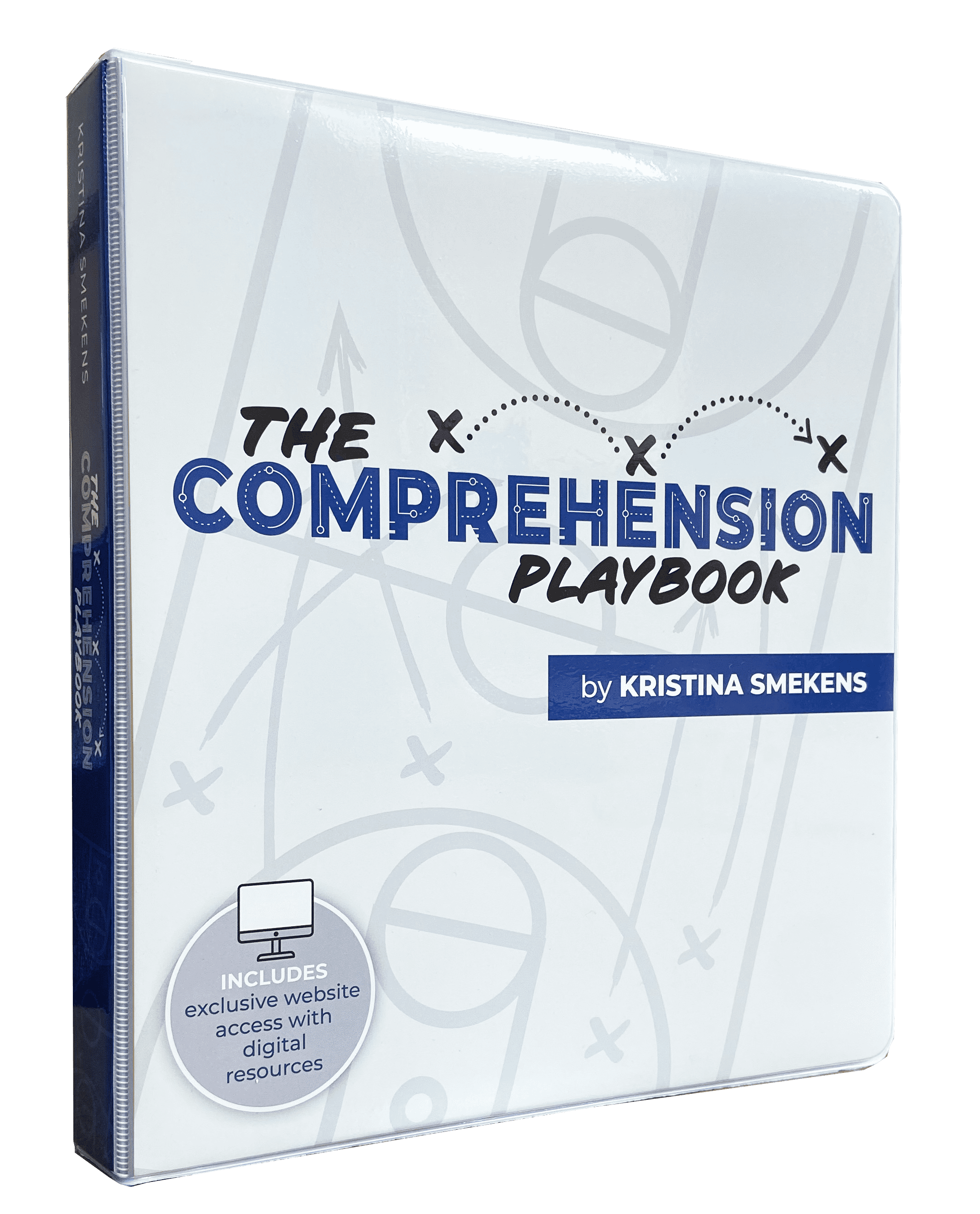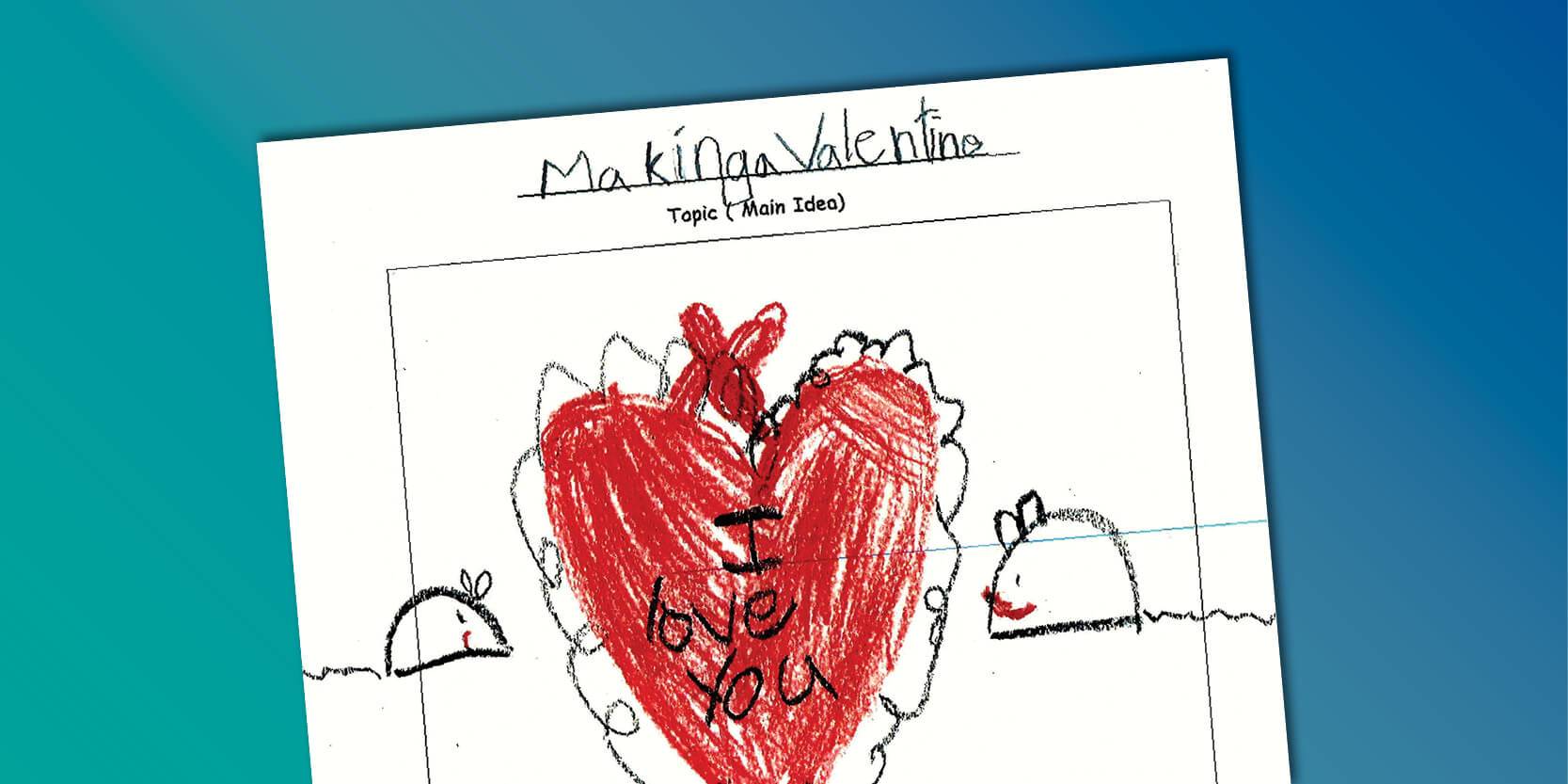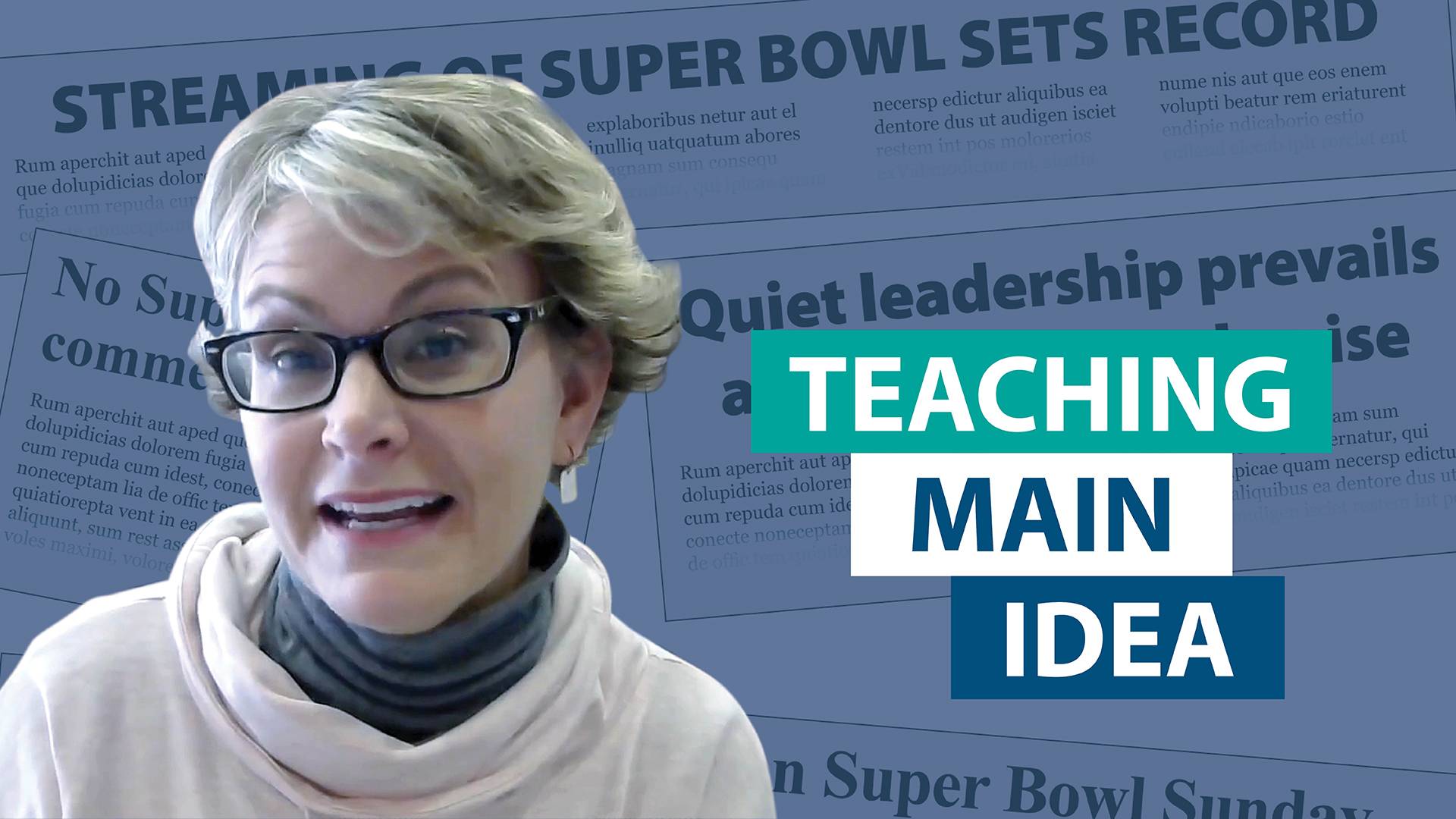Learning Center
reading
Support main idea with textual evidence
October 18, 2022
Beyond simply asking “what is the main idea of this passage?” standardized tests often ask students to identify textual evidence for a particular main idea. To teach students how to do this effectively, we need to solidify their understanding of a main idea. First clarify three key terms:
Topic: The topic is simply the subject of the passage (e.g., panda or panda cub). The topic can be stated in 1-2 words.
Main idea: Although the topic is a couple of words, the main idea is always a sentence. Also referred to as the central idea, it’s the most important or overall point the author is making. The topic (e.g., panda cub) is embedded in the main-idea sentence. But the rest of the sentence more narrowly reveals a specific facet or perspective of the topic (e.g., Panda cub is ready for public debut).
Evidence: Textual evidence of the main idea includes the words, phrases, and sentences within the original text that repeat or reiterate the sentiment of the main-idea sentence.
Before asking students to infer the main idea AND support it with textual evidence, start more slowly by teaching them how to test the strength of a provided main-idea statement. Do this in 5 steps with main-idea examples.
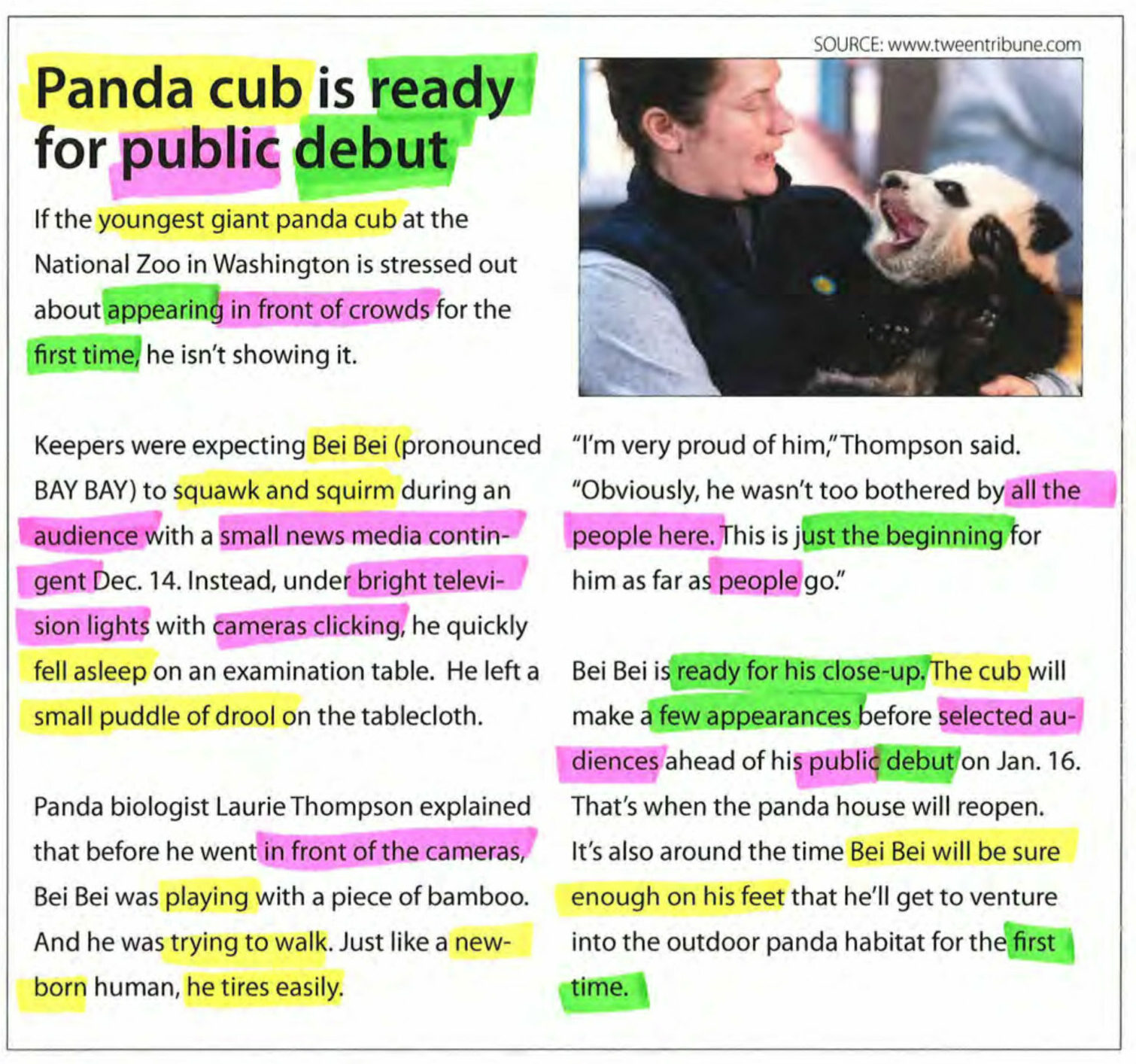 1. Reveal a short newspaper article and its headline (e.g., “Panda cub is ready for public debut” from Tween Tribune). Define the headline as the main idea.
1. Reveal a short newspaper article and its headline (e.g., “Panda cub is ready for public debut” from Tween Tribune). Define the headline as the main idea.
2. Explain that the headline “supposedly” announces what the article is mostly about, but you want to prove it. (In the proof-making process you will identify the sentences of evidence.)
3. Designate each major noun and verb stated in the headline with a different color (e.g., YELLOW = panda cub, GREEN = ready for debut, PINK = public).
4. Read aloud the article, pausing to highlight any supporting details that refer to one of those facets—using the appropriate color. (In your Think Aloud, acknowledge that authors vary their word choice, so the text detail won’t always be “debut” but a synonym, description, or related detail (e.g., appearing, first time, just the beginning).
5. Review the entire article looking for any sentence(s) that refer to ALL of the facets of the main idea—the strongest sentences are the most colorful ones.
Eventually, challenge students to do both—read a text highlighting the repetitious details to infer the main idea AND find the most colorful sentences to be its supporting textual evidence.
This approach equips students to tackle both parts of the question: answer “What is the central idea of the excerpt?” and cite textual evidence, ensuring test readiness.


